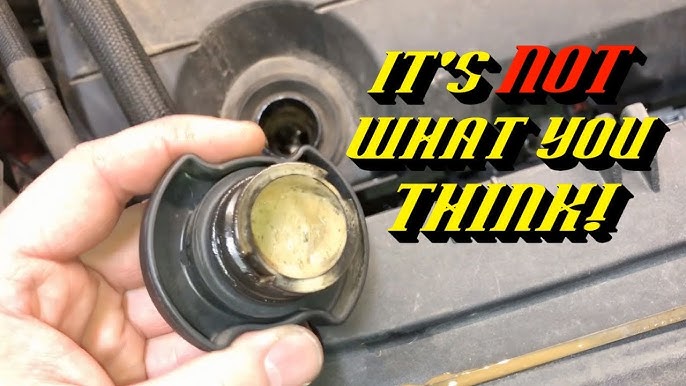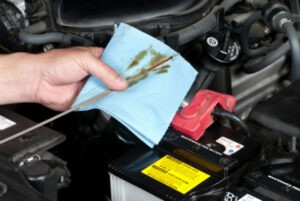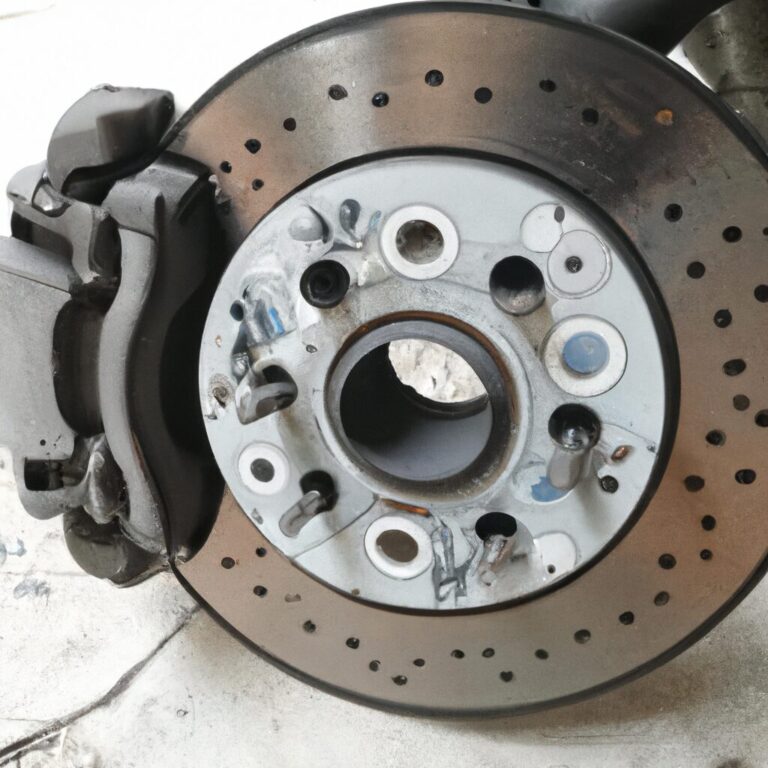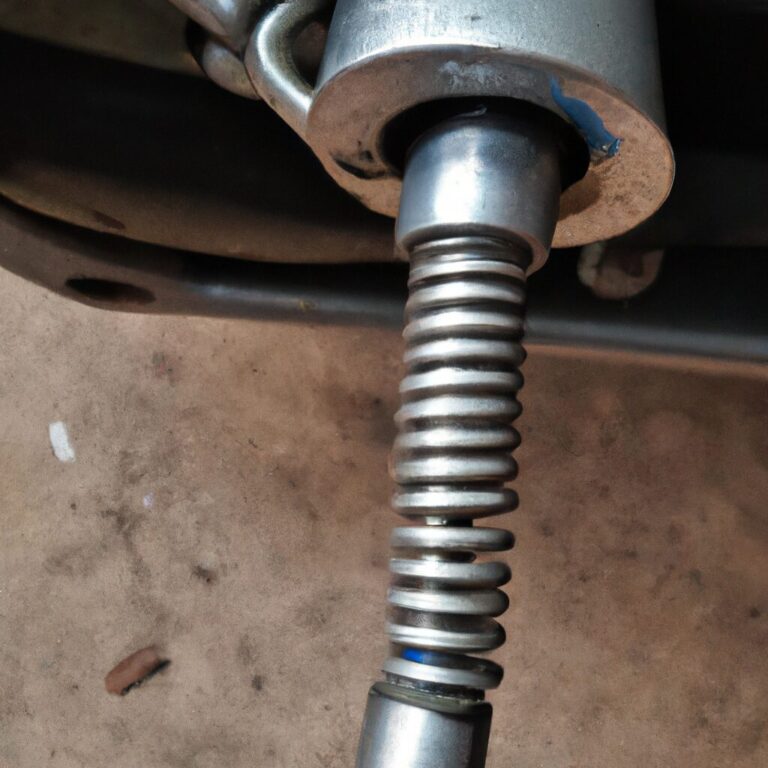How to Tell If Antifreeze is in Oil
To detect antifreeze in oil, look for a milky or frothy appearance in the oil. Conduct a chemical test.
The presence of antifreeze in oil can lead to engine damage, so it’s important to address this issue promptly. We will discuss the signs of antifreeze contamination in oil, the possible causes, and the steps to take if you suspect your engine may be affected.
By understanding how to identify this issue and taking appropriate action, you can protect your engine from potential harm and maintain its optimal performance. Let’s dive into the details to ensure your vehicle stays in top condition.
Symptoms Of Antifreeze In Oil
Antifreeze in oil is a serious problem that can cause severe damage to your vehicle’s engine if left untreated. It can lead to engine overheating, coolant system failure, and even complete engine failure. Identifying the symptoms of antifreeze in oil is crucial in addressing the issue promptly and avoiding costly repairs. In this article, we will look at some common signs that indicate the presence of antifreeze in your oil.
Visual Inspection
Performing a visual inspection is the first step in identifying antifreeze in oil. Start by checking the color and consistency of the oil on the dipstick. If the oil appears milky or frothy, it is a clear indication of antifreeze contamination. Typically, fresh oil should have a clear, amber color. However, if it has a whitish or yellowish appearance, it is likely that antifreeze has mixed with the oil.
Oil Appearance Changes
Antifreeze in oil can cause significant changes in the overall appearance and texture of the oil. Along with a milky or frothy appearance, the oil may also have a slimy or gel-like consistency. This is due to the emulsification of the oil and coolant, creating a mixture that is thicker and sticks to engine parts. These changes in oil appearance are a telltale sign of antifreeze contamination and should not be ignored.
Coolant Loss
Another symptom of antifreeze in oil is coolant loss. If you notice a significant decrease in the coolant level without any visible leaks, it is likely that antifreeze has made its way into the engine oil. Antifreeze can bypass the gasket seals and mix with the oil, leading to a gradual loss of coolant. It is essential to monitor the coolant levels regularly and take immediate action if there is a noticeable decrease.
Remember, detecting antifreeze in oil at an early stage can prevent further damage to your engine. If you notice any of these symptoms, it is recommended to consult a professional mechanic or service center to accurately diagnose and address the issue.

Credit: m.youtube.com
Causes Of Antifreeze In Oil
The causes of antifreeze in oil can lead to detrimental effects on your vehicle’s engine.
Head Gasket Failure
When the head gasket in your engine fails, it can allow antifreeze to seep into the oil passages.
Cracked Cylinder Head Or Engine Block
A cracked cylinder head or engine block can create pathways for antifreeze to mix with the oil.
Testing For Antifreeze In Oil
One of the key indicators of potential engine issues is the presence of antifreeze in the oil. Identifying this early can help prevent costly repairs down the line.
Coolant System Pressure Test
To check for antifreeze contamination, perform a coolant system pressure test. By pressurizing the cooling system, any leaks that allow antifreeze to mix with oil will be evident.
Oil Analysis
Another method to test for antifreeze in oil is through oil analysis. This involves sending a sample of your oil for testing to identify any traces of coolant that may be present.
Regularly conducting these tests can help maintain the health of your engine and ensure it continues to run smoothly.
Preventing Antifreeze Contamination
Detecting antifreeze in oil is crucial for preventing contamination. Signs of antifreeze in the oil include a milky appearance, coolant consumption, or a sweet odor coming from the oil. Regular inspections can help identify and address this issue to prevent costly engine damage.
Preventing antifreeze contamination is crucial to maintaining the integrity of your engine and preventing potential damage. Here are some essential steps you can take to ensure that your coolant and oil remain separate and at the proper levels.
Regular Maintenance
Regular maintenance plays a significant role in preventing antifreeze contamination in your oil. By following these maintenance tips, you can catch any potential issues early and keep your engine running smoothly:
- Perform frequent oil and coolant checks to identify any abnormalities.
- Inspect for leaks and signs of a failing gasket or seal.
- Change your oil and coolant at the recommended intervals to ensure fresh and uncontaminated fluids.
- Use a quality antifreeze coolant that is compatible with your specific vehicle make and model.
- Monitor your engine temperature gauge for any signs of overheating.
Proper Coolant And Oil Levels
Maintaining the proper levels of coolant and oil is vital to preventing antifreeze contamination. Follow these guidelines to ensure the correct levels:
- Regularly check your coolant reservoir to ensure it is filled to the recommended level.
- Inspect your oil dipstick and ensure that the oil level falls within the acceptable range.
- If you notice a drop in coolant or oil levels, investigate the cause promptly to prevent further damage.
- Check for any abnormal discoloration or foaming in either the coolant or oil, as this may indicate contamination.
- If you suspect antifreeze contamination, it is recommended to have your vehicle inspected by a qualified mechanic.
By following these steps and being diligent about maintenance, you can significantly reduce the risk of antifreeze contamination in your oil, ensuring the optimal performance and longevity of your vehicle’s engine.
Dealing With Antifreeze Contamination
Repairing The Cause
If you suspect antifreeze is in your oil, identification and repair of the underlying issue is crucial. Inspect the cooling system for leaks, a common cause of antifreeze contamination in oil. Consider replacing damaged seals, gaskets, or the head gasket to prevent further mixing of antifreeze and oil.
Oil System Flushing
Flushing the oil system is a pivotal step in addressing antifreeze contamination. Ensure the engine is off and the vehicle is parked on level ground. Remove the oil pan and inspect for any signs of antifreeze. If contamination is present, the entire oil system should be flushed. Consult a professional mechanic for proper flushing procedures or seek a reputable professional service.

Credit: www.gregs.com

Credit: m.youtube.com
Frequently Asked Questions For How To Tell If Antifreeze Is In Oil
How Do I Know If Coolant Is Mixing With Oil?
Coolant mixing with oil can be detected by checking for a milky or foamy substance under the oil cap, on the dipstick, or inside the oil filter. It could also cause white smoke from the exhaust and overheating. If you notice any of these signs, it’s best to have your vehicle checked by a mechanic.
How Do You Test For Antifreeze In Oil?
To test for antifreeze in oil, use a testing kit or take a sample for analysis.
What Happens When Antifreeze Gets In Your Oil?
When antifreeze mixes with oil, it can cause engine damage, leading to potential leaks and reduced lubrication.
Will Coolant In Oil Show On Dipstick?
Yes, coolant in oil can be detected on the dipstick. It appears as a foamy substance or a milky white color.
How Does Antifreeze Get Into The Oil?
Antifreeze can enter the oil due to a leaking head gasket or a cracked engine block. This contamination can cause serious damage to the engine if not addressed promptly.
What Are The Signs Of Antifreeze In Oil?
Common signs include a milky or foamy substance on the oil dipstick or under the oil cap, an overheating engine, or the appearance of white smoke from the exhaust.
Can I Drive With Antifreeze In The Oil?
It is not recommended to drive the vehicle if there is antifreeze in the oil. Continuing to drive could result in severe damage to the engine components.
Conclusion
To conclude, identifying the presence of antifreeze in oil is crucial for the overall health of your engine. By paying attention to visual cues such as color and texture, as well as monitoring the engine for any unusual symptoms, you can stay proactive in preventing potential damage.
Regular maintenance, including routine oil analysis, will ensure that your vehicle stays in optimal condition and runs smoothly for years to come. Stay vigilant and address any concerns promptly to keep your engine running at its best.


